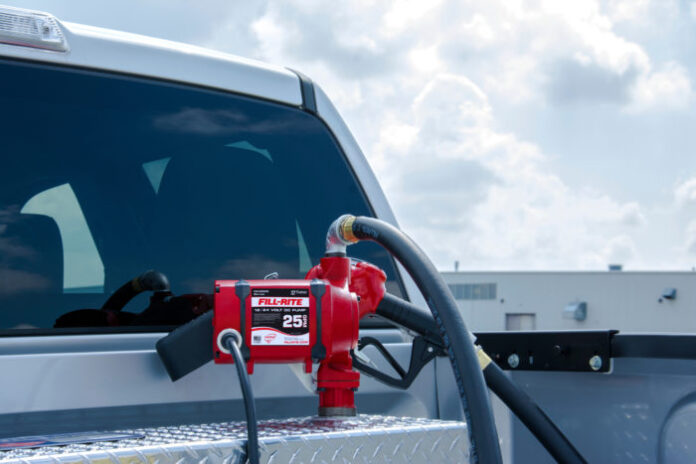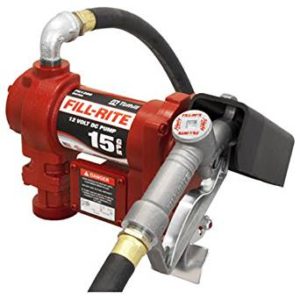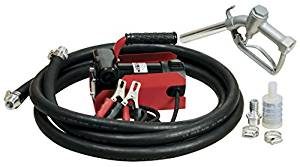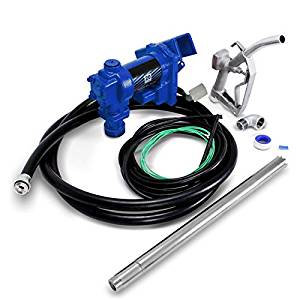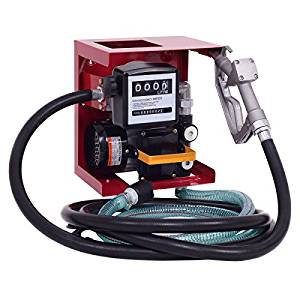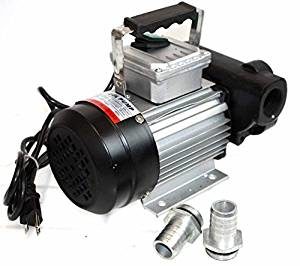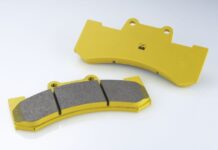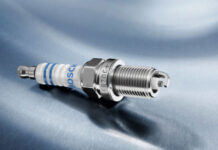Table could not be displayed. According to Wikipedia, a fuel pump is regarded as a frequently used and essential component of either an internal combustion engine or a car.
However, there are some engines that do not require the use of a fuel pump like old motorcycle engines and these engines only make use of the force of gravity in feeding fuel either from under high pressure or through a fuel tank to a fuel injection system.
In cases of carburetted engines, they make use of mechanical pumps that are mounted on the exterior of the fuel tank while in cases of fuel injected engines, they make use of electric fuel pump which are mounted right on the inside of the fuel tank.
For an engine to perform at its best or function properly, its fuel pressure needs to align with certain specifications.
For example, high pressure leads to an engine running rich and rough but it doesn’t combust all the fuel that is being pumped therefore causing the engine to be a pollutant and also inefficient.
If the pressure is quite low, then there would be certain cases or issues with the engine like stalling, misfiring or leaning.
How a Fuel Pump Works
The way a car engine works or functions is by burning a mixture of air and petrol. This is made possible because petrol mixed with air from a carburetor is pumped through a pipe inside the tank.
The fuel injection system of some engines mixes the air and petrol in the inlet manifold and a fuel pump however sucks out petrol from a tank using a pipe to the carburetor.
The way a fuel pump works is either through electrical means or through mechanical means but in any case, the fuel pump might be placed right inside the fuel tank or close to the fuel tank.
How to Keep a Petrol Tank Safe
Placing the petrol tank in the opposite direction of the car away from its engine is one way of ensuring its safety. Found inside a petrol tank is a FLOAT whose work is to send current to the fuel gauge so as to pass the information on how much petrol is left in the tank.
Inside the tank lies an opening which could either be a small hole or a pipe that enables flow in of air as the tank goes dry. Nowadays, petrol tanks have carbon fillers which makes sure fumes to do escape and pollute the environment.
Types of Fuel Pumps and How They Function
Today, there are basically three different types of fuel pump that might be found in a car but each of this fuel pump has its different function and mode of operation and that is why you ought to know the way each of the functions so you would be able to tell the difference or be able to identify them.
Furthermore, when shopping for a fuel pump, it would be wise to be able to tell if the fuel pump is designed to pump fuel into the fuel injection system or into its carburetor but here are some vital information are the types of fuel pumps and their mode of operation:
1. Mechanical Fuel Pump
This is a fuel pump that is not often being used in most cars today and it is designed specifically for use in engines with a carburetor. Prior to when fuel pumps were deemed necessary for cars, the fuel was pumped directly into the carburetor and this was carried out using the force of gravity.
Carburetors no longer became necessary or important since they could only pump fuel at low-pressure rates and this led to them being used less frequently over time. Most modern cars would not require the service of a mechanical fuel pump since they wouldn’t have a carburetor and the manufacture of newer cars implies that mechanical fuel pumps would get entirely phased out.
Mechanical fuel pumps are being used less because it functions by pumping fuel into the carburetor and this limits or lessens fuel delivery efficiency.
2. Electric Fuel Pumps
The electric fuel pump is one that is often being used in most cars today and is also considered to be a perfect replacement for the mechanical fuel pump.
The electric fuel pump is found right inside the fuel tank and when compared with the mechanical fuel pump, the electric fuel pump functions by pumping gas directly into the fuel injection system at a higher pressure rate and for this reason, they are found in several newer and modern cars, unlike the mechanical fuel pump.
The electric fuel pump is designed to work with a car’s fuel injector system and this is because it is pivotal in taking fuel to its destination faster and easier. As a result of this, it is considered as the best fuel pump for use.
3. Turbo Pump
Turbo pumps are also being used in automobiles and due to their large size, they are considered the best for engines with high volume. This type of fuel pump is present in jets or engines with a higher capacity and if researches on this type of fuel pump are made affordable then they might become more popular like the mechanical and electrical fuel pumps.
They are very powerful and extremely large and would not function or be compatible with small-sized engines or a typical car.
Signs and Symptom of a Bad Fuel Pump
Every modern vehicle today comes with a fuel pump as it is solely responsible for the transportation of fuel to the engine from the gas tank at a specified pressure so it can function or live up to expectation.
Turning on the ignition activates the fuel pump and this can be detected easily just by hearing a quiet hum or whine depending on some vehicles.
Any issue could arise at any time with the fuel pump and this could tend to affect performance or even driving the vehicle. However, a fuel pump might give some signs and symptoms when it is performing at a poor rate and here are some signs a fuel pump gives that shouldn’t be ignored;
Difficult starting
A problematic fuel pump tends to have difficulty in starting and as they are designed to function when the ignition is turned on, the fuel pump might get weakened over time if it is starting to have issues or develop a fault.
A weak fuel pump is quite capable of pumping fuel but the problem of starting is always because of low pressure. Taking more cranks instead of starting could be a result of a weakened fuel pump and in some serious cases, one might have to turn the ignition several times before it decides to start.
Whining Noise Coming from the Fuel Tank
A major sign that you might notice when your fuel pump is turning bad is a whining noise and if your fuel pump is worn out or old, the whining noise it would give might be quite loud when running.
Fuel pumps should produce a quiet hum sound during operation but if there is an excessively loud sound coming from the fuel pump then that is an indication that there might be a problem. It might be the presence of contaminated fuel in the fuel pump, a damaged fuel pump or even low fuel.
High-Temperature Stalling
Several problems in a vehicle might be responsible for cases of stalling but you should pay close attention to it if it happens when the car thermometer shows a high-temperature range.
Stalling at a very high temperature could be the problem with the fuel pump motor and if this goes on as well as a rise in the temperature gauge then it clearly tells you that the fuel pump is getting weak or failing and is due for replacement.
Engine Sputtering
The sputtering engine is a major indication of a faulty fuel pump, especially when running at high speeds. If you are running at a very high speed and then the engine sputters then that also indicates that the fuel pump has a problem.
This is simply because the fuel pump has failed in providing a constant supply of fuel into the engine at a specified pressure level.
Car Surging
Vehicle surging could be a result of irregular resistance inside the fuel pump and this is also an indication that the fuel pump needs to be repaired. Surging is similar to gas pedal being used and it happens at a random or constant speed and if this happens then you need to know that there is an issue with the fuel pump.
Loss of Power Due to Stress
What also tells you that a fuel pump is bad is when a vehicle loses power under stress. Losing power under stress simply implies losing power while accelerating, carrying a heavy load or riding an uphill.
The engine tends to shut down because the fuel pump can no longer meet the vehicle’s requirements of increased fuel demands at a particular time. This, however, signifies that the fuel pump regulates fuel pressure inaccurately and can no longer supply the needed or required amount of fuel.
No Starting
A very serious issue with a bad fuel pump is when the car no longer starts after turning the ignition. This shows that the fuel pump has failed completely as it can no longer supply fuel to run the engine. This leads to cranking as the ignition is turned.
A no-start scenario can also be a result of various issues in a vehicle and nothing is certain until a check is carried out.
Low Gas Mileage
If you are constantly filling up your gas tank then there might be an issue with the fuel pump. This could be because a valve no longer opens, therefore, causing fuel to pour into the engine system than necessary. Furthermore, an excess amount of fuel in the engine system isn’t used or stored.
Best Fuel Transfer Pumps – Buying Guide
1. Fill-Rite FR1210G 12V 15 GPM Fuel Transfer Pump
If you want a fuel pump capable of delivering serious power then you might not want to miss out on the Fill-Rite GPM fuel transfer pump which customers have given so many good remarks about online.
It is extremely versatile as it is efficient in pumping kerosene, gasoline and diesel and this makes it a favorable choice for every buyer. That isn’t all about this fuel transfer pump as its high-quality material construction and durability are also key features why it ranks high on the market.
A heavy-duty cast iron construction also contributes to its long-lasting lifespan and also being explosion-proof is also another reason why this fuel pump is rated the best among other fuel pumps.
Making use of this fuel pump means total peace of mind as it comes with a two-year warranty and thanks to its in-built strainer, users rest assured that only fuel of clean quality would go into the engine system.
Pros:
- Has a durable construction
- Extremely versatile as it can be used in various applications
- Guarantees only the flow of clean fuel
Pros:
- Has no anti-siphon valve
2. FUELWORKS Electric Diesel Fuel Transfer Pump Kit
Despite the fact that this pump is specifically for pumping diesel, you would be amazed at the level of its performance. Its performance is so catchy that most customers are sad over the fact that it doesn’t pump kerosene or gasoline.
Being easy to adjust is also another eye catching feature of this fuel pump and also having a self-printing feature has also earned it some good reviews by customers as they found it to be the best choice for commercial use.
Its electric motor has an IP55 classification, therefore, making it durable and powerful and all of these features make this fuel pump quite difficult to ignore.
Pros:
- Comes with a thermal protection switch
- Easy to adjust
- Its design is user-friendly
Cons:
- Just for pumping diesel
3. ARKSEN Fuel Transfer Pump
Look no further than the ARKSEN fuel transfer pump if you want a fuel pump with impressive and high versatility. Its technical specifications make it a good choice for pumping mineral spirits, gasoline, diesel, heptane and even hexane and this signifies that this pump is specifically used for pumping anything.
Having a robust construction makes this fuel pump safe as it is resistant to explosion and it is also well designed against high-temperature conditions and this also makes it ideal for use in tough environments.
Its casing is made using original cast iron and this adds to its durability and strength. For this reason, this fuel pump would never wear, tear, explode or even be affected by certain environmental factors.
Pros:
- Has a superb pump quality
- User-friendly design makes it easy to install
- Transfer fuel at fast speeds
- Has an impressive flow rate
Cons:
- Quite noisy than other fuel pumps
4. Goplus 110V Electric Diesel Oil Fuel Transfer Pump
Voltage is also very important when it comes to the fuel pump as it would be a disaster after purchasing a fuel pump then you get home and realize it is compatible with the voltage.
Pumping at a voltage of 110V means you need to find a voltage source that would match and for this reason, it is able to deliver up to sixteen gallons of fuel in just one minute.
Durability is also another feature that you should be excited about when talking about this fuel transfer pump as it is made using heavy-duty cast iron. Having a self-priming rotary vane also indicates that this pump would be able to transfer fuel efficiently and effortlessly.
Pros:
- Works with automatic and manual nozzles
- Comes with a self-priming rotary vane
- durable
Cons:
- designed just for diesel alone
5. Self-Prime110v Ac 16gpm Oil Transfer Pump
If you are in search of a fuel transfer pump that would carry out its job then this is all you need as even though it isn’t as popular as the others, it is one you can trust or rely on in delivering exceptional performance.
This pump is carrying out light work alone such as transferring fuel into small vehicles and light machines and it is also perfect for lightweight products like gasoline and diesel.
Made using cast iron also makes this fuel transfer pump very durable while its in-built strainer also makes sure that only clean quality of fuel is being transferred or obtained.
Pros:
- also user-friendly
- extremely durable
- the best for lightweight pumping
Cons:
- not ideal for use with thicker oils
Conclusion
After going through this review, you are now fully equipped with all the knowledge you need on identifying a bad fuel pump. This review would be your guide each time an issue comes up with your fuel pump and it is also very necessary that you do not neglect any of these signs when you start noticing them.
If you are already noticing them but haven’t been paying attention then you might want to check out the condition of your fuel pump immediately as it might be due for a change or repair.

